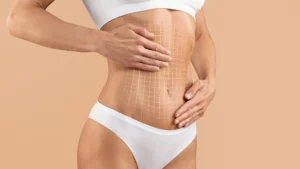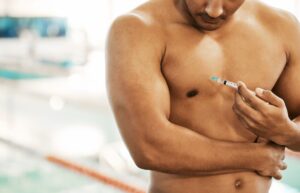Gynecomastia typically feels like a rubbery or firm mass underneath the nipple, sometimes accompanied by tenderness or mild pain, and may cause emotional distress or self-consciousness due to a noticeable change in chest appearance. For many men, the sensation is most evident as a lump or swelling beneath one or both nipples, which may be sensitive to touch. Some experience a dull ache, while others notice only a change in shape or fullness. Understanding what gynecomastia feels like is crucial for distinguishing it from regular chest fat and determining the next steps toward treatment.
—
What Is Gynecomastia?
Gynecomastia is the benign enlargement of the glandular tissue of the male breast. Unlike chest fat, which is soft and spread out, gynecomastia is typically characterized by a firmer, disc-like mound of tissue directly beneath the nipple. It can affect one or both sides and may become noticeable during puberty, with aging, or in response to certain medications or health changes.
How Common Is Gynecomastia?
Gynecomastia is surprisingly common, affecting up to 60–70% of adolescent boys at some point and about 30–60% of adult men. In many cases, the condition resolves independently, especially in teenagers. However, for others, it persists and can become a source of physical and emotional discomfort.
Learn more about our male body contouring options.
—
Causes of Gynecomastia
Natural Hormone Changes
The most frequent cause of gynecomastia is an imbalance between estrogen and testosterone. Estrogen, typically considered a “female” hormone, is also present in men in small amounts. When estrogen levels rise or testosterone levels fall, breast tissue may grow.
Medications and Drugs
Certain medications can disrupt hormonal balance and trigger gynecomastia. These include some anti-androgens, anti-anxiety medications, antibiotics, ulcer medications, and chemotherapy drugs. Recreational drugs, such as marijuana and alcohol, as well as anabolic steroids used by bodybuilders, can also contribute.
Health Conditions
Underlying illnesses, such as liver disease, kidney failure, tumors, or hyperthyroidism, may alter hormone levels and result in breast tissue growth.
Herbal Products
Some herbal supplements, like tea tree or lavender oil, contain plant estrogens (phytoestrogens) that may promote gynecomastia when used in excess.
—
Common Sensations
When people ask, “What does gynecomastia feel like?” they often refer to the tactile and sensory changes in the chest. Typically, gynecomastia feels like a firm, rubbery mass directly under the nipple area. This lump is distinct from regular fat’s softer, more diffuse texture.
Gynecomastia may cause tenderness, sensitivity, or mild pain, especially during the early stages of development. For some men, pressing on the area leads to discomfort or a dull ache. However, not everyone experiences pain—some notice only a change in contour.
Physically, gynecomastia can create a noticeable swelling or fullness beneath the nipple, sometimes extending outward. One or both breasts may be affected, and the area might feel firmer than typical fat deposits.
Beyond physical sensations, gynecomastia can cause visible changes that impact self-esteem. Many men feel self-conscious about the appearance of their chest, especially in fitted clothing or shirtless situations. This emotional impact can lead to anxiety, avoidance of social situations, and reduced confidence.
—
Gynecomastia vs. Chest Fat
Distinguishing between gynecomastia and chest fat is essential for understanding your options. Chest fat, or pseudogynecomastia, is soft, moves easily, and is distributed across the chest. In contrast, gynecomastia is firmer, localized, and centered beneath the nipple.
Ask yourself these questions:
- Is the swelling tender or firm right under the nipple? (Gynecomastia)
- Does the tissue feel spread out and soft, like regular fat? (Chest fat)
- Has your chest changed shape despite overall body weight staying the same? (Possible gynecomastia)
If you’re still unsure, a professional evaluation can help.
Explore our comprehensive resources on male procedures.
—
How to Check for Gynecomastia
Performing a simple pinch test at home can provide clues about whether you have gynecomastia or just chest fat.
- Stand or sit comfortably with your arms relaxed.
- Gently pinch the tissue directly underneath your nipple between your thumb and forefinger.
- Check for a firm, disc-like mound of tissue. Gynecomastia usually feels like a small rubbery lump.
- Pinch both sides for comparison.
- Note if one side feels firmer or more swollen.
- Observe any tenderness or pain during the test.
If you notice persistent swelling, pain, or rapid growth, it’s wise to consult a medical professional. Changes in the nipple, such as discharge or skin changes, should always be evaluated promptly.
A healthcare provider, like Dr. Erella, will review your medical history and perform a physical examination. Imaging tests (such as ultrasound) or blood work are sometimes requested to rule out other conditions and confirm the diagnosis.
—
Treatment Options for Gynecomastia
In cases where gynecomastia is mild or caused by temporary hormonal changes, it may resolve without intervention. Exercise can reduce overall body fat, which may help improve the look of the chest if excess fat is present. However, true gynecomastia (glandular tissue) will not disappear with exercise alone.
Tips for prevention and management:
- Maintain a healthy weight.
- Avoid substances linked to gynecomastia (anabolic steroids, certain medications, excessive alcohol).
- Consult your doctor before starting new medications or supplements.
When symptoms persist or cause significant distress, gynecomastia surgery is the most effective solution. If you experience ongoing discomfort, emotional issues, or if non-surgical options have failed, surgical treatment may be appropriate. It directly removes the excess glandular tissue for lasting results.
Incisions are typically small and placed discreetly around the areola or in the chest fold. Most patients return to daily activities within a week, with full recovery and final results appearing in several weeks to months. A compression vest is usually worn for several weeks post-operatively to minimize swelling and help the chest contour heal smoothly. Dr. Erella will provide specific instructions based on your individual needs.
Many men find that surgical correction of gynecomastia restores their confidence, comfort, and quality of life. The transformation often goes beyond the physical, helping patients feel more at ease in social and personal situations.
Discover more about gynecomastia surgery.
—
Dr. Erella Offers Expert Gynecomastia Surgery
If you wonder, “What does gynecomastia feel like?” and seek expert guidance, Dr. Erella at Aspira Plastic Surgery offers compassionate, individualized care for men experiencing gynecomastia. With extensive experience in male body contouring, Dr. Erella can help you understand your options and determine the path forward for your needs. Many patients appreciate the supportive environment and our focus on restoring comfort and confidence. Dr. Erella is a board-certified plastic surgeon who uses the latest techniques to achieve optimal results.
Learn more about Dr. Erella and his approach to patient care.
—
Conclusion
If you’ve ever wondered about gynecomastia sensations, remember: this condition is often experienced as a firm, tender mass beneath the nipple. The swelling can lead to both physical and emotional discomfort. Whether you’re seeking answers or considering treatment, understanding the signs of gynecomastia is the first step toward regaining your confidence and comfort.
—
FAQs About Gynecomastia
1. What causes excess breast tissue in men?
Excess breast tissue in men can result from an imbalance in hormones (estrogen and testosterone), medications, or certain health conditions like kidney disease or testicular tumors.
2. Can male breast cancer cause gynecomastia?
While gynecomastia and male breast cancer may share some symptoms, such as swelling or tenderness in the breast, cancer is much rarer. Usually, it involves a lump that doesn’t move, unlike the more flexible, rubbery feel of enlarged male breast tissue caused by gynecomastia.
3. What is male breast reduction surgery?
Male breast reduction surgery is a cosmetic procedure that removes excess glandular or fatty tissue in men, often to treat gynecomastia and restore a flatter, firmer chest contour.
4. How can I tell if I have enlarged male breast tissue?
Enlarged male breast tissue is typically firmer and more localized beneath the nipple, while excess adipose tissue (fat) tends to be softer and spread across the chest.
5. What is breast gland tissue, and how does it relate to gynecomastia?
Breast gland tissue is the firm tissue beneath the nipple that can enlarge in gynecomastia, leading to a noticeable lump or swelling. Glandular breast tissue is responsible for producing milk in females but is also present in men. When this tissue enlarges, it can result in gynecomastia.
6. Can enlarged breast tissue cause pain?
Yes, enlarged breast tissue can sometimes lead to discomfort or tenderness, particularly if it becomes swollen or irritated.
7. What is the cost of gynecomastia surgery?
Gynecomastia surgery cost varies from $3,000 to $8,000, depending on location, the case’s complexity, and the surgeon’s experience. It’s best to consult with a specialist for a personalized estimate.
8. Can the pituitary gland affect gynecomastia?
Yes, the pituitary gland regulates hormones in the body, and disruptions in pituitary function can lead to hormonal imbalances, potentially causing gynecomastia.
9. How do hormones like estrogen and testosterone affect gynecomastia?
Hormonal imbalances, particularly higher levels of estrogen relative to testosterone, are the most common cause of gynecomastia, leading to the development of excess glandular or adipose tissue in the chest.
10. Can illegal drugs cause gynecomastia?
Yes, certain illegal drugs, such as marijuana and anabolic steroids, can interfere with hormone levels and may cause breast enlargement or the development of gynecomastia.
11. What role do blood tests play in diagnosing gynecomastia?
Blood tests can help identify hormonal imbalances, including elevated estrogen levels or low testosterone, which may contribute to the development of gynecomastia.
12. What are the best ways to treat gynecomastia?
Gynecomastia treatment varies based on the cause, but may include lifestyle changes, medication adjustments, hormone therapy, or gynecomastia surgery for more persistent cases.
13. How can I prevent gynecomastia?
Gynecomastia prevention focuses on maintaining a healthy weight, avoiding substances that can cause hormonal imbalances (like anabolic steroids and illegal drugs), and addressing any underlying medical conditions promptly.
14. Can swollen breast tissue in men resolve on its own?
In some cases, swollen breast tissue in men, particularly if caused by temporary hormonal fluctuations, may resolve on its own without medical intervention. However, if the swelling persists or causes discomfort, it’s essential to consult a healthcare professional for a proper diagnosis and to explore potential treatment options.










